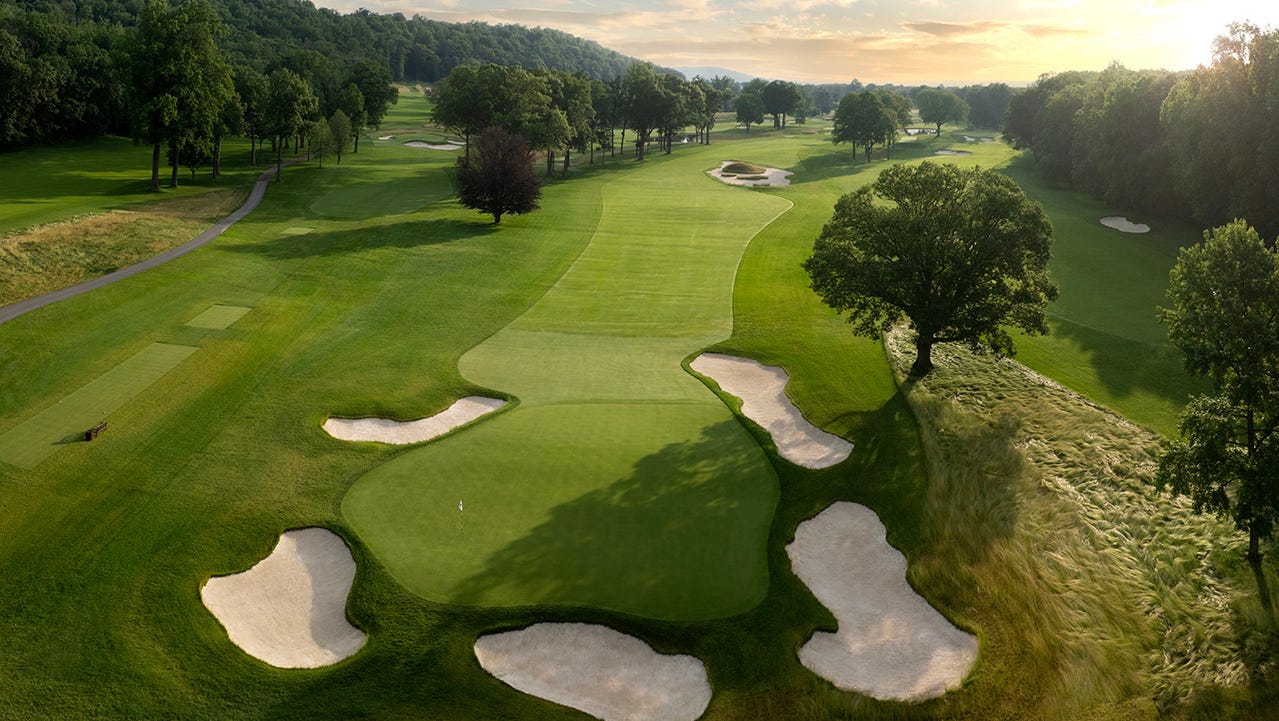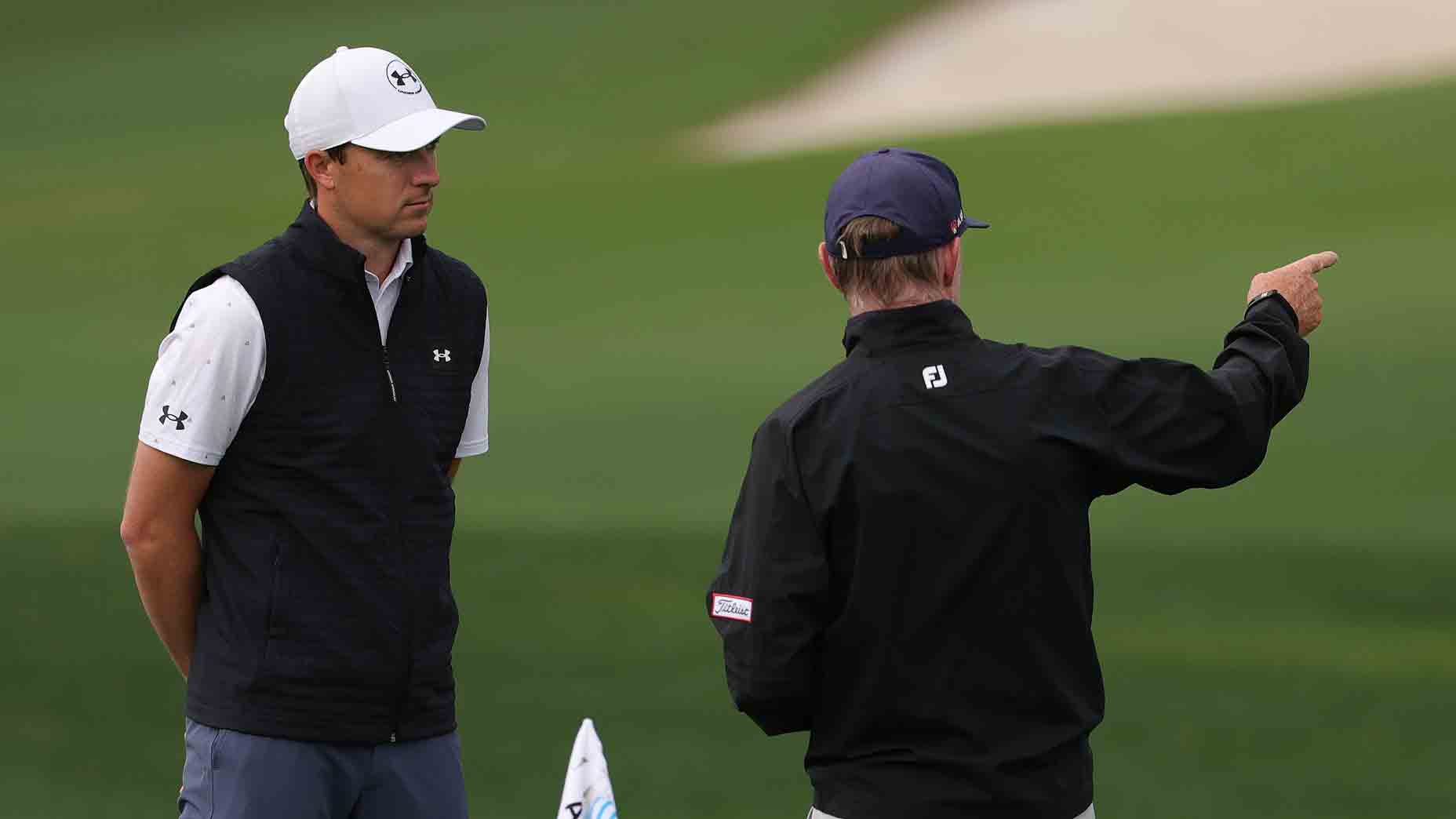Baltusrol Golf Club – Upper Course
Golfweek gives you a look at the newly restored Baltusrol Golf Club’s Upper Course.
- Baltusrol Golf Club reopened its Upper Course earlier this year after a restoration by architects Gil Hanse and Jim Wagner.
- The project aimed to restore the course to A.W. Tillinghast’s original 1922 design, including re-expanding the greens.
- While the Lower Course is slated for future majors, the Upper is considered a favorite by many architecture fans.
SPRINGFIELD, N.J. – Baltusrol, one of the finest private golf clubs in the world and home to two A.W. Tillinghast designs within site of the New York City skyline, is again fully open to the business of wowing its members and guests. Following a restoration of the club’s Lower Course that wrapped up in 2021, the team of Gil Hanse and Jim Wagner completed work and reopened the club’s Upper Course in mid-2025.
The Lower is perhaps the more famous of the two courses, but many architecture fans and even club members will tell you they prefer the Upper – both reside comfortably within the top 100 classic courses in the United States. Baltusrol is the only club with two courses that have each hosted at least one U.S. Open and U.S. Women’s Open, among other top-tier events. Because of the Lower’s scale and accessibility, it’s the likely candidate to host more majors in the future and already is slated to host the 2029 PGA Championship. It’s not that the Upper isn’t enough of a course; it’s just that the Upper sits higher on the side of a hill with less room for all the infrastructure needed to host a men’s major.
After signing on with a master plan in 2018, it was Hanse and Wagner’s job to put each course back to Tillinghast’s intent. The Lower especially had seen restoration efforts and renovations over the decades that had changed the flavor of the course. The Upper had been left more alone, making it an even better candidate for an accurate restoration.
Armed with extensive photography and archives, Hanse and Wagner – as they famously have done at several Golden Age courses in recent years – set about removing their own ideas from the equation to restore both courses as closely as possible to how they would have played soon after opening in 1922, even if they did have to make some adjustments for the modern game.
The most significant part of the work included the re-expansion of the Upper’s incredible greens to their original sizes and slopes. As with most courses, the greens on the Upper had shrank over the decades, losing hole locations while the often extreme slopes left entire sections of some greens totally un-pinnable. After the restoration, the Upper’s are again among the most vexing and fun greens in the game.
Following are excerpts from Hanse’s comments at a reopening celebration and press conference for the Upper Course this year.
Gil Hanse on the similarities and differences between the Upper and Lower courses, and how it was to restore them both
The two golf courses were built at the same time. So from a feature standpoint, they’re very consistent in their presentation. I think the Lower was a little bit more bold, a little bit more aggressive because he didn’t have as much to work with down there. So I think you get features like the Sahara (bunker on No. 17) popping up down there and the fairway bunkering on the fifth hole. I think he was a little bit more aggressive.
The Upper was a little bit more restrained because he had a better piece of land to work with. And I think that shows the brilliance of a golf architect and that he understands the limitations of certain sites and what it needs architecturally, and he understands the advantages of certain sites and how you might ultimately soften that.
From the perspective of the Upper, there had been significantly less done to it, meaning that the Lower had gotten a lot of the architectural changes in the name of hosting championships. The Upper was this kind of sleepy little golf course that sat up there, and I think every aspect of it that when the club looked at it, was from a restorative standpoint.
So we had to move a lot less dirt. Although we did move a lot of dirt on the second hole, we didn’t have to reposition as many things. The bunker configurations were closer. The green complexes, we definitely worked on the expansions in a similar fashion, but it was always, honestly, a little bit more exciting working with the Upper because you felt like you were a lot closer to Tillinghast in regards of what we were doing there, and it wasn’t as big a change.
And those of you who know me know I love just sort of the simpler approaches to golf architecture. It was a joy working on the Upper. As I said in that video (shown at the reopening), I 100 percent believe that golf course could host any championship that it wanted to, from an architectural and playability standpoint. Infrastructurally, I’m not sure.
On the 14th hole of the Upper, which features two greens sitting side by side
Originally, Tillinghast had built the lower right-hand green (shown at the left in the photo above, as the picture was shot from behind the green), and that was always part of our intention to restore it. And then the other green was built in preparation for the ’36 Open, because the lower green that Tillinghast had built would occasionally flood from water coming off the hill.
They weren’t certain that it would work. Now we have the technology to protect the green and allow it to grow as it needs to. We’re going to leave two greens.
First, we decided to abandon the non-original green, the upper one. When we got into restoration and found the original contours of the lower green, the upper green was about six to seven feet above it, and we thought, “Well, these can’t coexist. They can’t sit side by side the way they are right now.” We abandoned the idea of the upper green, and then I said to Shaymus Maley, who was here doing the shaping, I said, “Let’s just dig into the upper one and let’s just … we’re going to blow it up anyway. Let’s just get all the dirt out of the way and see if we can find the original grade.” And we did. And then that’s what appeared. It came back to the two, being able to sit side by side beautifully. And the way that they coexist now, I think, is an exciting addition to the golf course.
This is a bit of a long-winded story of getting to the point that I know there was leadership at other clubs that would’ve said, “Now wait a second. First you wanted it, then you took it out, then you put it back, then you took it out again, and now you want it again.” And they would’ve scratched their heads and said, “Well, what’s it going to be?” But (here,) they were fully supportive of it. And when we were able actually to stand out there and show them what it looked like, that’s what ultimately convinced me, because you can’t do it before you build it. You can’t just blow up a green and say, “Okay, we want to look at the two side by side.” That support was always there from the leadership of the club to do what was ultimately best for Baltusrol.
I think we’re going to take a year to look at it and see how it plays. And then we can determine whether it’s every other day or whether one green is more fitting for a championship than the other.
Gil Hanse’s favorite hole of Baltusrol Upper
The hole that I love out here, and it’s not one that probably anybody would pick, is the (par-5) eighth hole. I love the way that hole sits in the landscape and just the rumples and how it flows up and over. The bunkering is modest, but it’s appropriately placed, and we shifted the one (bunker) for the second shot downrange. And that green complex, how it just sits up on that shelf, spectacular. So that would be the one hole that I would love to just pick (Tillinghast’s) brain on what he thought.
A.W. Tillinghast’s style as a designer
I’ve used the word chameleon. His style varied based on where he was in his career. This being early on, I think he still had that enthusiasm, and he never lacked for confidence. So I think that there was an excitement in getting a chance to put something on this piece of property.
We were chatting about this earlier: This is the one golf course that remains consistent. He was obviously very good at self-promotion, and when you read his advertisements, Baltusrol is always there. Other courses come and go from the list, but he was always proud of the work he did here. It was an opportunity for him to work on an amazing stage.
On the potential during a restoration to change things that might be perceived today as a mistake in design from an original Golden Age architect
That’s a great question, and it’s something we don’t allow ourselves to do. We really don’t. One, it’s a very slippery slope, once you start guessing or thinking, “That’s not quite right,” or “I would do this differently.” … Obviously we modernize golf courses, we move bunkers downrange, we move tees back, et cetera, et cetera. But trying to ascertain why he did something or, “Was that a mistake?” – it’s something we really try to avoid doing because it just leads to other conclusions that might not produce the best results from a restoration standpoint.










